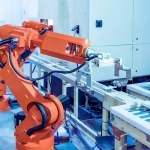When Elon Musk first announced Tesla’s entry into robotics with a dancer in a bodysuit, the idea of the Tesla robot seemed whimsical. Fast forward to today, and Tesla Optimus robot is on the brink of becoming a practical reality. This article delves into the capabilities, goals, and potential impact of the Tesla Optimus robot.
What Does the Tesla Optimus Do?
The Tesla Optimus robot is a humanoid robot designed to interact with the physical world. It can walk on two legs, manipulate objects with its arms and hands, and navigate its environment using advanced AI systems. Optimus can self-calibrate its limbs, perform various movements, balance on one leg, and recognize and interact with objects in its surroundings. It represents a shift from Tesla’s experience in autonomous vehicles to creating intelligent robots that can perform a wide range of tasks.
What Is the Function of Optimus?
Optimus is designed to perform tasks that are repetitive, dangerous, or tedious for humans. Its functions include lifting objects, sorting items, balancing, and performing precise movements. In its latest iteration, Optimus Gen 2, the robot has significantly improved its dexterity and motion capabilities. It can handle tasks such as folding laundry and sorting objects by color, showcasing its potential for both industrial and household applications.
What Can Tesla Optimus Gen 2 Do?
Tesla Optimus Gen 2 can walk, squat, balance on one leg, and manipulate objects with considerable dexterity. It can lift objects, perform routine tasks, and adapt to different environments. The robot’s ability to self-calibrate and recognize its limbs within its field of view highlights its advanced AI and machine learning capabilities. These features make it suitable for a variety of roles, from factory work to household chores.
What Are the Features of Optimus Robot?
Optimus boasts several impressive features:
- Height and Weight: Optimus stands at 5 feet 8 inches tall and weighs approximately 125 pounds.
- Carrying Capacity: It can carry up to 45 pounds.
- Battery and Power: Equipped with a 2.3 kWh battery, Optimus consumes 100 watts while sitting and 500 watts while walking.
- Sensors and Cameras: The robot features Tesla’s autopilot cameras and sensors for navigation and perception.
- AI and Machine Learning: Optimus uses advanced AI systems for autonomous decision-making and task execution.
- Dexterous Hands: The robot has 28 structural actuators and 11 degrees of freedom in its hands for dexterous manipulation.
What Is the Goal of Tesla Optimus?
The goal of Tesla Optimus is to revolutionize the robotics industry by creating a versatile, general-purpose humanoid robot. Elon Musk envisions Optimus as a fundamental transformation for civilization, contributing to a future of abundance where robots perform tasks that humans find undesirable. This could potentially boost economic output significantly and address labor shortages by automating routine and dangerous jobs.
How Much Can Tesla Optimus Lift?
The Tesla Optimus robot is designed to lift up to 150 pounds and carry 45 pounds while walking at a speed of 5 miles per hour. This capability makes it suitable for industrial applications where heavy lifting is required, such as in factories and warehouses.

How Much Would Optimus Cost?
Elon Musk has suggested that the Tesla Optimus robot could eventually cost less than half the price of a car, targeting a price point of around $20,000 to $30,000. While these figures are preliminary, the goal is to make Optimus affordable for a wide range of consumers and businesses, facilitating widespread adoption.
When Will Tesla Optimus Be Available?
The availability timeline for Tesla Optimus varies. For Tesla Optimus Gen 2 release date, some estimates suggest that the robot could start shipping as early as 2025, while others predict a launch closer to 2027. Despite these timelines, the development and refinement of Optimus are ongoing, with continuous improvements being made to its capabilities and design.
The Tesla Optimus robot represents a significant leap in the field of robotics, combining advanced AI with practical applications. Its ability to perform a variety of tasks, from industrial work to household chores, positions it as a versatile tool for the future. While there are still questions about its final form and widespread adoption, the potential impact of Optimus on industries and daily life is immense. As Tesla continues to refine and develop this humanoid robot, we may soon see a future where robots like Optimus are integral to both our work and home environments.










